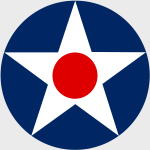Hobby Master HA7902 USAAC Boeing P-12E Pursuit Aircraft - 16th Pursuit Group, Canal Zone, 1934 (1:48 Scale)
"Why should we have a navy at all? There are no enemies for it to fight except apparently the Army Air Force."
- General Carl Spaatz, Commander of the US 8th Army Air Force, after WWII
 The Boeing P-12 or F4B was an American pursuit aircraft that was operated by the United States Army Air Corps and United States Navy.
The Boeing P-12 or F4B was an American pursuit aircraft that was operated by the United States Army Air Corps and United States Navy.
Boeing developed the aircraft as a private venture to replace the Boeing F3B and Boeing F2B with the United States Navy, the first flight of the P-12 took place on June 25, 1928. The new aircraft was smaller, lighter and more agile than the ones it replaced but still used the Wasp engine of the F3B. This resulted in a higher top speed and overall better performance. As result of Navy evaluation 27 were ordered as the F4B-1, later evaluation by the United States Army Air Corps resulted in orders with the designation P-12. Boeing supplied the USAAC with 366 P-12's between 1929 and 1932. Production of all variants totalled 586.
P-12s were flown by the 17th Pursuit Group (34th, 73rd, and 95th Pursuit Squadrons) at March Field, California, and the 20th Pursuit Group (55th, 77th and 79th Pursuit Squadrons) at Barksdale Field, Louisiana. Older P-12s were used by groups overseas: the 4th Composite Group (3rd Pursuit Squadron) in the Philippines, the 16th Pursuit Group (24th, 29th , 74th, and 79th Pursuit Squadrons) in the Canal Zone, and the 18th Pursuit Group (6th and 19th Pursuit Squadrons) in Hawaii.
The P-12 remained in service with first-line pursuit groups until replaced by Boeing P-26s in 1934-35. Survivors were relegated to training duties until 1941, when most were grounded and assigned to mechanics's schools.
Pictured here is a 1:48 scale replica of a Boeing P-12E pursuit aircraft that was operated by the USAAC's 16th Pursuit Group, then defending the Canal Zone during 1934.
Sold Out!
Dimensions:
Wingspan: 8-inches
Length: 5-3/4-inches
Release Date: January 2011
Historical Account: "Zonians" - The Panama Canal Zone (Spanish: Zona del Canal de Panama) was a 553 square mile (1,432 km2) unorganized U.S. territory located within the Republic of Panama, consisting of the Panama Canal and an area generally extending 5 miles (8.1 km) on each side of the centerline, but excluding Panama City and Colan, which otherwise would have fallen in part within the limits of the Canal Zone. Its border spanned two of Panama's provinces and was created on November 18, 1903 with the signing of the Hay-Bunau Varilla Treaty. When reservoirs were created to assure a steady supply of water for the locks, those lakes were included within the Zone.
On February 26th, 1904, the Isthmian Canal Convention was proclaimed. In this, the Republic of Panama granted to the United States in perpetuity, the use, occupation and control of a zone of land and land under water for the construction, maintenance, operation, sanitation and protection of the canal. From 1903 to 1979 the territory was controlled by the United States of America, which had built the canal and financed its construction. From 1979 to 1999 the canal itself was under joint U.S.-Panamanian control. In 1977 the Torrijos-Carter Treaties established the neutrality of the canal.
Except during times of crisis or political tension, Panamanians could freely enter the Zone. In fact, normally anyone could walk across a street in Panama City and enter the jurisdiction. However, the 1903 treaty placed restrictions on the rights of Panamanians to buy at retail stores in the Zone. This was for the protection of Panamanian shopkeepers.
During U.S. control of the Canal Zone, the territory, apart from the canal itself, was used mainly for military purposes; however, approximately 3,000 American civilians (called "Zonians") made up the core of permanent residents. U.S. military usage ended when the zone was returned to Panamanian control. It has now been integrated into the economic development of Panama, and is a tourist destination of sorts, especially for visiting cruise ships.





![USAF General Dynamics F-16C Viper Fighter - 18th Aggressor Squadron, 354th Wing, "Red Flag - Alaska", Eielson Air Force Base, Alaska, 2017 [Aggressor Scheme] (1:72 Scale)](http://cdn4.volusion.store/qh9e9-jdqv9/v/vspfiles/photos/HA3871-1.jpg?v-cache=1740197136)


